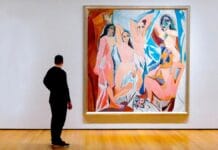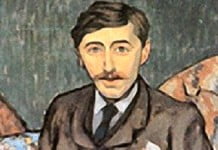Realism is an approach to art and literature that attempts to depict subjects as they appear in everyday life without idealisation or romanticisation. It sought to portray everyday life and society with fidelity and accuracy, focusing on ordinary people and their experiences. Realism was a literary movement that emerged in the mid-19th century as a reaction to the romanticism of the early 19th century.
Realism began in France in the 1840s, largely as a response to the extravagant ideals of romanticism. Romanticism emphasised emotion, individualism, and the sublime aspects of nature, often presenting life in a more idealised or exaggerated manner. In contrast, realism aimed to represent life as it was, without embellishment. This shift was influenced by the social and political changes of the time, including the Industrial Revolution, which brought about significant shifts in social structures and living conditions.
Characteristics
The hallmark of realism is its commitment to depicting everyday life and society as they are. Critical characteristics of realism include:
Focus on Ordinary People
Realist literature often centres on middle- and lower-class characters, exploring their lives, struggles, and environments.
Detailed Descriptions
Realist writers provide meticulous details about settings, objects, and characters, aiming to create a lifelike portrayal of the world.
Complex Characters
Characters in realist works are complex, with a mixture of virtues and flaws. They are often portrayed with psychological depth and motivation.
Social Critique
Realist literature frequently critiques social, political, and economic conditions, highlighting issues such as class disparity, injustice, and the impact of industrialisation.
Objective Narrative Style
Realist authors strive for an objective narrative tone, avoiding overt moralising or idealisation. The narrator is often detached, allowing readers to form their judgments.
Themes
Realist works often explored:
- Social and economic inequalities
- The impact of industrialisation and urbanisation
- Moral dilemmas and ethical choices
- The complexity of human psychology
- The influence of environment on character
Techniques
Realist writers employed various techniques:
- Detailed description of settings and characters
- Use of dialect and colloquial language
- Objective, often omniscient narration
- Linear plot structures
- Psychological exploration of characters
Realism in French Literature
French literature was at the forefront of the realist movement. Honoré de Balzac’s La Comédie Humaine is a monumental series of novels and stories that depict French society in great detail. Balzac’s intricate plots and in-depth character studies reflect the complexity of 19th-century life. Gustave Flaubert’s Madame Bovary is another seminal realist work. It portrays the tragic life of Emma Bovary and critiques the provincial middle class. Flaubert’s meticulous prose and focus on everyday banalities exemplify realism’s emphasis on accurate depiction.
Realism in Russian Literature
Russian realism flourished with authors like Leo Tolstoy and Fyodor Dostoevsky, who explored the human condition with profound psychological insight. Tolstoy’s War and Peace and Anna Karenina are masterpieces that delve into the lives of Russian aristocracy and peasants, portraying their personal and societal struggles. Dostoevsky’s novels, such as Crime and Punishment and The Brothers Karamazov, examine moral and philosophical dilemmas, deeply exploring human psychology and the societal impacts of poverty and crime.
Realism in American Literature
In the United States, realism emerged after the Civil War as writers sought to depict the rapid changes in American society. Mark Twain’s The Adventures of Huckleberry Finn” is a quintessential realist work, capturing the dialects, landscapes, and social issues of the Mississippi River region. Henry James, known for his detailed psychological realism, explored the inner lives of his characters in works like The Portrait of a Lady and The Ambassadors. William Dean Howells, often considered the father of American realism, advocated for literature that truthfully represented everyday life, as seen in his novel The Rise of Silas Lapham.
Realism in English Literature
In England, realism was prominent in the works of authors like Charles Dickens, George Eliot, and Thomas Hardy. Dickens’s novels, including Bleak House and Great Expectations, are rich with social commentary and vivid characters, depicting the struggles of the urban poor and the corruption of the upper classes. George Eliot’s Middlemarch is a landmark realist novel exploring the intricate social fabric of a provincial town and the personal ambitions and moral dilemmas of its inhabitants. Thomas Hardy’s novels, such as Tess of the d’Urbervilles and Jude the Obscure, often highlight the harsh realities of rural life and the tragic fates of individuals constrained by societal norms.
Realism Beyond Western Literature
Realism is not confined to Western literature; it has also been expressed in other literary traditions. Writers from various cultures have employed realist techniques to depict their societies’ unique challenges and experiences. For example, Indian authors like R K Narayan and Premchand used realism to portray the complexities of Indian life, while African writers like Chinua Achebe and Ngũgĩ wa Thiong’o explored the impacts of colonialism and post-colonialism in their realist narratives.
Key Authors
Notable realist authors include:
- Honoré de Balzac (France)
- Gustave Flaubert (France)
- Charles Dickens (England)
- George Eliot (England)
- Leo Tolstoy (Russia)
- Mark Twain (United States)
Impact on Other Arts
Realism influenced other art forms, including theatre, painting, and film. Playwrights like Henrik Ibsen and Anton Chekhov brought realism to the stage, focusing on everyday situations and complex characters. Ibsen’s plays, such as A Doll’s House and Hedda Gabler, challenged societal norms and addressed issues like gender roles and individual freedom. Chekhov’s works, including The Cherry Orchard and The Seagull, emphasise character development and the subtleties of human interaction.
In painting, artists like Gustave Courbet and Jean-François Millet depicted rural and working-class life scenes focusing on realistic detail and social commentary. Courbet’s The Stone Breakers and Millet’s The Gleaners are iconic examples of realist art. Other masters of realism include Édouard Manet and Winslow Homer.
In visual arts, realism was characterised by:
- Accurate, unidealised depictions of subjects
- Attention to detail and texture
- Focus on everyday scenes and ordinary people
- Rejection of classical and romantic styles
Realism and Naturalism
Realism paved the way for naturalism, a related literary movement that emerged in the late 19th century. Naturalism, influenced by the scientific theories of Charles Darwin and Emile Zola, emphasised the deterministic aspects of human life, suggesting that individuals are shaped by their environment and heredity. Naturalist writers, such as Emile Zola, Theodore Dreiser, and Stephen Crane, depicted characters whose lives are dictated by forces beyond their control, often highlighting the darker aspects of human existence.
Realism’s Influence on Modern Literature
The principles of realism continued to influence modern literature, shaping the development of various literary movements. Modernist writers, such as James Joyce and Virginia Woolf, built on realist techniques, incorporating stream-of-consciousness and exploring the complexities of human perception and consciousness. Joyce’s Ulysses and Woolf’s Mrs Dalloway demonstrate how realism’s focus on detailed depiction of life evolved into more experimental forms.
Realism in Contemporary Literature
Contemporary literature still bears the imprint of realism, with many authors continuing to explore the intricate realities of everyday life. Writers like Jhumpa Lahiri, Chimamanda Ngozi Adichie, and Jonathan Franzen use realist techniques to address contemporary issues such as immigration, identity, and social change. Lahiri’s The Namesake, Adichie’s Americanah, and Franzen’s The Corrections offer nuanced portrayals of modern life, reflecting realism’s enduring legacy.
Critiques and Limitations
Despite its significant contributions, realism has faced criticism for its perceived limitations. Some argue that its focus on mundane details and ordinary life can be restrictive, lacking the imaginative scope of other literary styles. Critics also point out that realism’s emphasis on objectivity and detachment can sometimes result in a lack of emotional depth. However, these critiques have led to the evolution and blending of realist techniques with other styles, enriching the literary landscape.
Realism and Social Change
Realist literature has often catalysed social change, drawing attention to injustices and advocating for reform. Realist writers have highlighted issues such as poverty, inequality, and corruption by portraying the lives of marginalised and oppressed individuals, prompting readers to reflect on and address these societal problems. The social consciousness embedded in realist works continues to inspire activism and empathy.
As literature continues to evolve, realism remains a foundational and adaptable mode of storytelling. The digital age and global interconnectedness have introduced new themes and settings for realist exploration. Contemporary realist writers increasingly incorporate diverse voices and perspectives, ensuring the movement continues growing and reflecting the changing world.
Realism has had a profound and lasting impact on literature, shaping how writers depict and readers understand the world. Realist literature mirrors society by focusing on the ordinary and the authentic, reflecting its complexities, challenges, and beauty. From its origins in the 19th century to its ongoing influence in contemporary literature, realism continues to be a vital and dynamic force in the literary world, encouraging us to look closely at the realities of our lives and the lives of others.





























